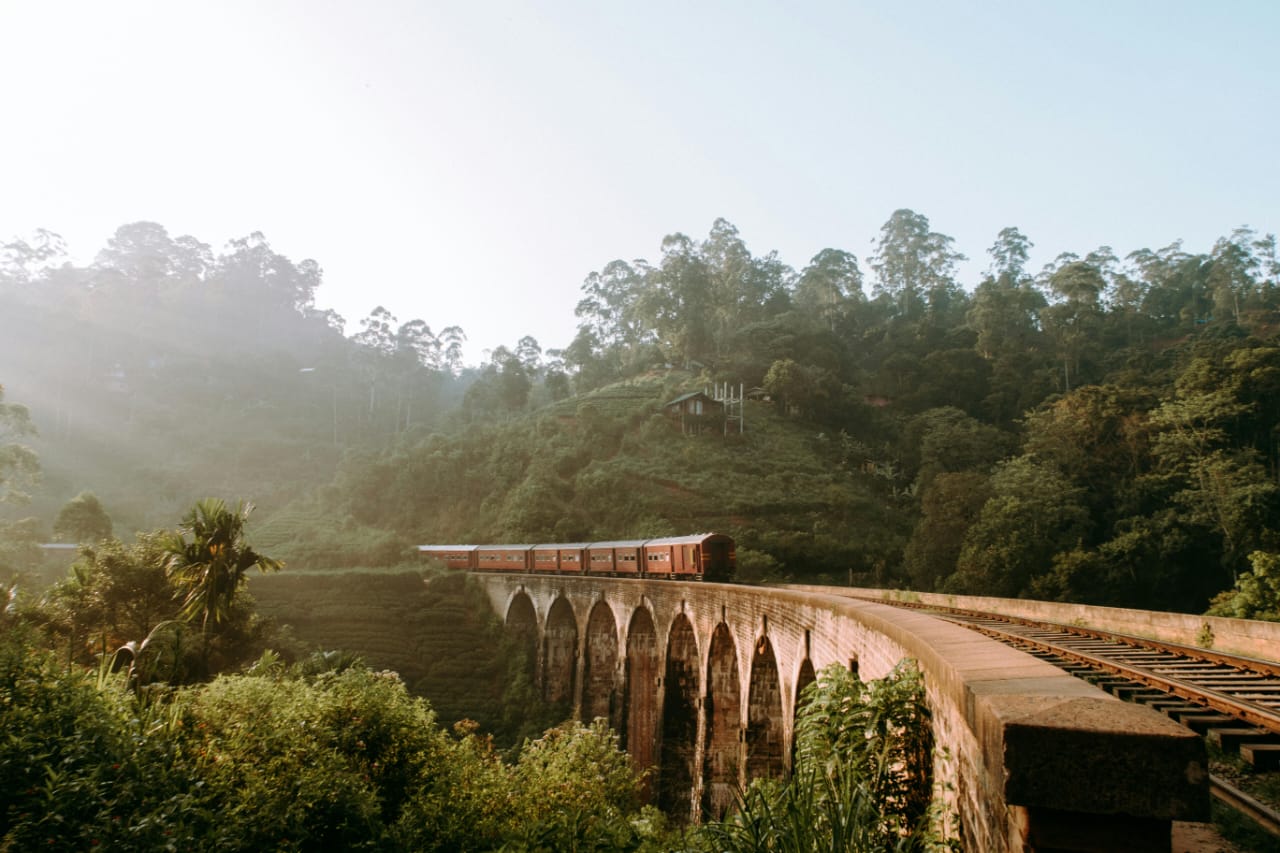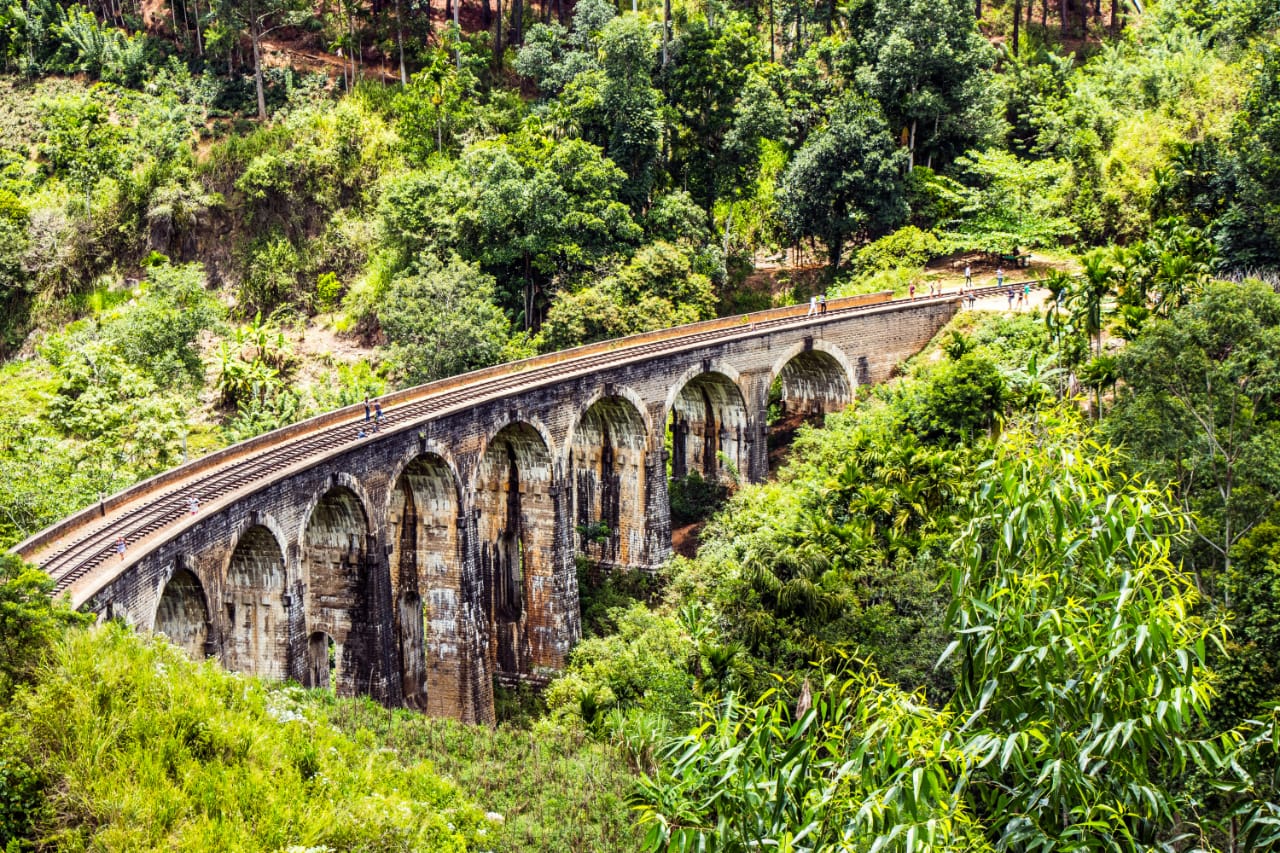The Bridge in the Sky, also known as the Nine Arch Bridge (Sinhala: ආරුක්කු නමයේ පාලම; Tamil: ஒன்பது வளைவுகள் பாலம்) is a viaduct bridge in Sri Lanka and one of the best examples of colonial-era railway construction in the nation.[5] The bridge was built to handle a difficult nine-degree bend and a steep incline. Completely constructed by local workers under British supervision, the project presented several logistical difficulties, such as challenging terrain and material transportation. Since its completion in 1919, the bridge has remained sturdy, displaying creative engineering solutions like locally made sand-cement facing blocks and concrete cornice blocks for arch support.[6] Between the Ella and Demodara train stations in Demodara is where you can find it. The bridge's innovative architecture and the abundance of greenery on the surrounding hillsides have contributed to a steady rise in tourism in the area.[5] With the consent of M. Cole Bowen, the Chief Construction Engineer, Railway Extensions, Harold Cuthbert Marwood, the engineer in charge of that section of the railway, had completed the work.[6] The renowned Ceylonese engineer and inventor D. J. Wimalasurendra was the principal designer and project manager of the "Upcountry Railway Line of Ceylon" project. Harold Cuthbert Marwood of the Ceylon Government Railway's Railway Construction Department designed the viaduct. All of the records, including the plans and drawings, are detailed in the 1923 report "Construction of a Concrete Railway Viaduct in Ceylon," which was published by the Engineering Association of Ceylon. According to popular belief, P. K. Appuhami, a local Ceylonese builder, worked with British engineers to construct the bridge.Although Appuhami's involvement in the bridge's construction is not supported by any written records, the folklore is still a part of the local culture. Rumour had it that the steel allotted for the bridge had been diverted to British war-related projects at the time of construction, which coincided with the start of World War I. As a result, work stalled, and the locals decided to build the bridge out of stone bricks and cement without any steel—aside from the rails and pins holding them in place, of course.

